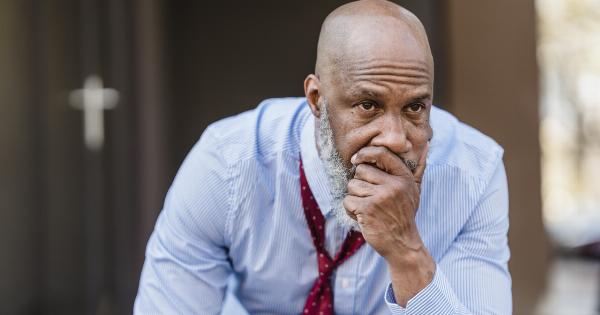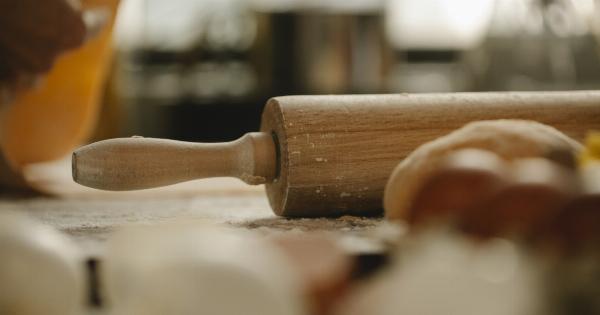For centuries, baldness has been a common concern among people of all genders and ages. The loss of hair not only affects one’s physical appearance but also can have a significant impact on self-confidence and overall well-being.
Over the years, numerous remedies have emerged claiming to cure or prevent baldness. From home remedies to advanced medical treatments, the search for the ultimate solution continues.
The Science Behind Baldness
Baldness, also known as alopecia, can occur due to various factors such as genetics, hormonal changes, medical conditions, or even external causes like excessive hairstyling.
The most common form of baldness is known as male pattern baldness or androgenetic alopecia, which affects both men and women.
Research has shown that the primary cause of baldness is a hormone called dihydrotestosterone (DHT). DHT is derived from testosterone and can bind to hair follicles, causing them to shrink gradually.
This shrinkage leads to thinner and shorter hair until the follicles eventually stop producing new hair.
Common Remedies for Treating Baldness
Over the years, people have explored various remedies in their quest to restore lost hair. While some methods have proven to be effective for certain individuals, others may not yield the desired results. Here are some common remedies:.
1. Medications
Medications such as minoxidil and finasteride are commonly prescribed for baldness treatment. Minoxidil, usually in the form of a topical solution or foam, stimulates hair growth and slows down hair loss.
Finasteride, a prescription medication, works by blocking the conversion of testosterone to DHT, thereby reducing hair loss.
2. Hair Transplant Surgery
Hair transplant surgery is a popular option for individuals seeking a permanent solution to baldness. This surgical procedure involves moving hair follicles from areas with thick hair growth to areas with thinning or no hair.
The transplanted hair then continues to grow naturally, providing a long-lasting result.
3. Laser Therapy
Laser therapy, also known as low-level laser therapy (LLLT), is a non-invasive treatment that uses red light to stimulate hair growth.
The light is believed to promote blood circulation in the scalp, leading to improved hair follicle function and increased hair growth.
4. PRP (Platelet-Rich Plasma) Therapy
PRP therapy involves injecting the patient’s own platelet-rich plasma into the scalp to stimulate hair growth. Platelets contain growth factors that promote healing and hair regrowth.
This treatment has gained popularity in recent years, although further research is needed to validate its effectiveness.
5. Essential Oils and Natural Remedies
Some individuals turn to essential oils, such as rosemary oil, peppermint oil, or lavender oil, to combat baldness. These oils are believed to have anti-inflammatory and antioxidant properties that can improve scalp health and stimulate hair growth.
However, scientific evidence regarding their effectiveness is limited.
The Promise of Breakthrough Technologies
In recent years, breakthrough technologies have shown promise in the field of hair restoration. Companies are investing in research and development to introduce innovative solutions for tackling baldness.
1. Hair Cloning
Hair cloning, also known as hair multiplication or hair regenerative medicine, is a cutting-edge approach that aims to replicate hair follicles in a laboratory setting.
The cloned follicles are then transplanted into the scalp, promoting new hair growth. Although still in the experimental stages, hair cloning holds great potential for treating baldness in the future.
2. Gene Therapy
Gene therapy involves manipulating genes to treat or prevent diseases. In the context of baldness, scientists are exploring gene therapy to target the genes responsible for hair loss.
By altering these genes, it may be possible to prevent baldness from occurring or promote hair regrowth.
3. Stem Cell Therapy
Stem cell therapy is another promising avenue for treating baldness. Stem cells have the unique ability to develop into various types of cells, including hair follicle cells.
Researchers are investigating ways to use stem cells to regenerate hair follicles and stimulate new hair growth.
Prevention and Maintenance Strategies
While a permanent cure for baldness may still be on the horizon, there are several preventive measures and maintenance strategies that individuals can adopt to manage the condition effectively:.
1. Good Hair Care Practices
Adopting a healthy hair care routine can help prevent further hair loss and maintain the strength and vitality of existing hair.
Avoid excessive use of heat styling tools, use a gentle shampoo and conditioner, and be cautious about tight hairstyles that pull on the hair.
2. A Balanced Diet
Nutrition plays a crucial role in overall hair health. A balanced diet that includes essential vitamins and minerals, such as iron, zinc, biotin, and vitamin D, can contribute to healthy hair growth.
Consult with a healthcare professional or a registered dietitian for personalized advice.
3. Stress Management
Stress can contribute to hair loss and exacerbate baldness. Engaging in stress-relieving activities, such as exercise, meditation, or hobbies, can help manage stress levels and potentially slow down hair loss.
4. Seeking Professional Advice
If you’re experiencing significant hair loss or baldness, it is essential to consult with a healthcare professional or a dermatologist.
They can evaluate your condition and provide personalized recommendations or treatment options based on your specific needs.
Embracing Your Baldness with Confidence
While the search for a cure continues, it’s important to remember that baldness is a natural part of life for many individuals. There is beauty and confidence in embracing one’s baldness.
Celebrities like Dwayne “The Rock” Johnson, Vin Diesel, and Sinead O’Connor have confidently paved the way, proving that baldness doesn’t define one’s success or attractiveness.
In conclusion, baldness remains a prevalent concern for many people worldwide. While several remedies and treatments are available, a permanent cure for baldness has yet to be discovered.
Continued advancements in science and technology provide hope for the future, but it’s essential to manage expectations and embrace oneself, regardless of hair loss. Remember, true beauty comes from within, and confidence shines far brighter than any head of hair.




























